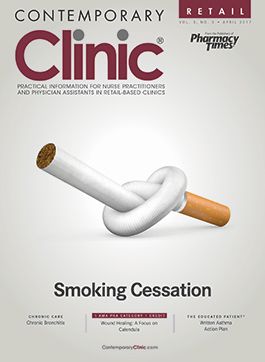The Next Pandemic: Ready or Not?
As we emerge from peak flu season, this year’s challenges highlight the importance of vaccination and pharmacists’ contribution to it.
As we emerge from peak flu season, this year’s challenges highlight the importance of vaccination and pharmacists’ contribution to it. Based on CDC estimates, this season’s flu vaccine reduced the risk of getting sick by about half (48%) for vaccinated individuals.
Although we haven’t had a major flu pandemic in quite some time, the Ebola and Zika outbreaks serve as examples of what can happen when a dangerous pathogen becomes easily transmissible. This is why many epidemiologists are watching out for the next “big one”—on the scale of the 1918 flu pandemic—that could be brewing right now in a rainforest or a makeshift laboratory. Bill Gates recently sounded an alarm to this effect in a
Business Insider
op-ed (February 18, 2017)
: “Whether it occurs by a quirk of nature or at the hand of a terrorist, epidemiologists say a fast-moving airborne pathogen could kill more than 30 million people in less than a year,” wrote Gates, who, through his foundation, is well connected with top epidemiologists. “And they say there is a reasonable probability the world will experience such an outbreak in the next 10 to 15 years.”
Are public health agencies and pharmacies as ready as they should be? The short answer is no: when it comes to pandemics, we can’t be overprepared. In a 2016 interview,
Sonia Shah, author of the book
Pandemic: Tracking Contagions from Cholera to Ebola and Beyond
, cited a survey that revealed “the majority of ... pandemic experts of all kinds felt that a pandemic that would
sicken a billion people, kill 165 million people, and cost the global economy about $3 trillion would occur sometime in the next two generations.”
Advances in biotechnology, vaccines, and drugs appear to be our best defenses, and pharmacists are perfectly positioned to employ them. According to the CDC, 1 in 4 Americans is vaccinated in a pharmacy. Because pharmacists are the most widespread and accessible immunizers, public health agencies should be ready to collaborate with them in a pandemic. Pharmacists could immunize patients efficiently, thereby allowing other health care providers the time to treat patients who are ill. However, for pharmacies to be fully leveraged, significant planning and coordination is needed, and more work is needed to ensure pharmacists are incorporated early.
Sam Graitcer, MD, of the CDC Pandemic Influenza Vaccine Task Force, spoke of this collaboration at the 2016 National Adult and Influenza Immunization Summit. In his presentation, “Being Ready for the Next Pandemic: Coordination Between Public Health and Pharmacies for Expanded Access to Pandemic Vaccines,” Graitcer noted how in 2009, pharmacists, although they provided H1N1 vaccinations, were underutilized because the vaccine was not widely available in pharmacies until after the peak of disease. During a severe pandemic, beginning widespread vaccination at the peak of disease would have little impact, according to Graitcer. Expanded use of pharmacists as vaccinators early in a pandemic response is critical.
Contemporary Clinic
®
will continue to do all it can to help educate and prepare pharmacists with content, such as in last month’s Infectious Disease issue. This month’s Central Nervous System issue features carefully prepared articles on headaches, multiple sclerosis, and epilepsy to help you provide the highest quality of care to your affected patients.
Thank you for reading!
Mike Hennessy, Sr
Chairman and CEO

Knock Out Aches and Pains From Cold
October 30th 2019The symptoms associated with colds, most commonly congestion, coughing, sneezing, and sore throats, are the body's response when a virus exerts its effects on the immune system. Cold symptoms peak at about 1 to 2 days and last 7 to 10 days but can last up to 3 weeks.
COPD: Should a Clinician Treat or Refer?
October 27th 2019The Global Initiative for Chronic Obstructive Lung Disease (GOLD) defines the condition as follows: “COPD is a common, preventable, and treatable disease that is characterized by persistent respiratory symptoms and airflow limitation that is due to airway and/or alveolar abnormalities usually caused by significant exposure to noxious particles or gases.â€
Diabetic Ketoacidosis Is Preventable With Proper Treatment
October 24th 2019Cancer, diabetes, and heart disease account for a large portion of the $3.3 trillion annual US health care expenditures. In fact, 90% of these expenditures are due to chronic conditions. About 23 million people in the United States have diabetes, 7 million have undiagnosed diabetes, and 83 million have prediabetes.
What Are the Latest Influenza Vaccine Recommendations?
October 21st 2019Clinicians should recommend routine yearly influenza vaccinations for everyone 6 months or older who has no contraindications for the 2019-2020 influenza season starting at the end of October, according to the Advisory Committee on Immunization Practices.
What Is the Best Way to Treat Pharyngitis?
October 18th 2019There are many different causes of throat discomfort, but patients commonly associate a sore throat with an infection and may think that they need antibiotics. This unfortunately leads to unnecessary antibiotic prescribing when clinicians do not apply evidence-based practice.
